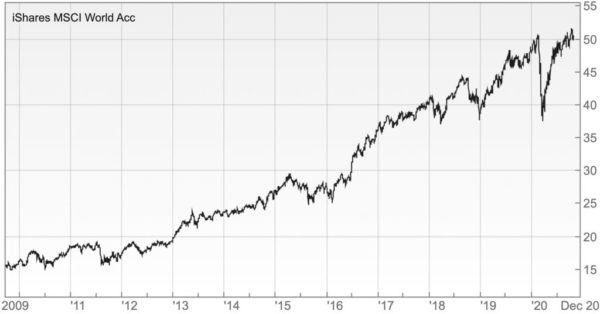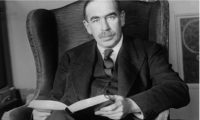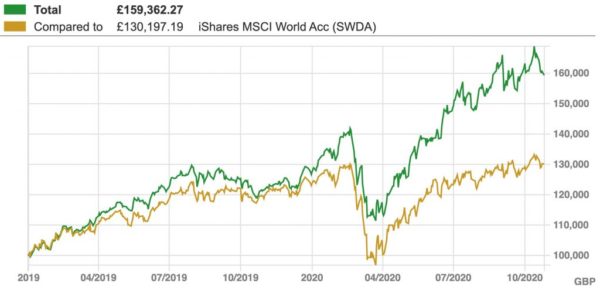May
2021
FundHunter: The Investor’s Dilemma
DIY Investor
14 May 2021
The investor’s dilemma faces all of us: if we don’t invest, the purchasing power of our money will slowly decline; if we do invest, we are exposed to the risk of loss. It results in many sticking with cash – writes Andrew Latto
A bank account feels safe. But the purchasing power of cash will erode in time: a dollar ain’t what it used to be.
But for many, a bank account is seen as the lesser of two evils.
After all, investment offers no guaranteed return and no money-back guarantee. And there are always stories of investments that have gone wrong.
If someone is unable to invest in a way that preserves capital, is it any surprise they stick with a bank account? Losing money negates the purpose of investing.
It is rational to avoid investing if we do not know how to preserve capital. But it is also rational to learn to preserve capital when investing.
We can solve the investor’s dilemma if we can invest in a way that preserves capital over the long term. This offers an investment-style return without the risk of a large and permanent loss of capital.
This article considers how to achieve this.
Short term risk: volatility
For those with a short-term horizon, volatility is risk.
A market slump is very painful if you need to realise capital within the next couple of years. And market slumps happen from time to time. Investors with a short-term horizon are therefore advised to have a cash reserve.
All investors are at risk of market declines in the short term. But only investors with a short-term horizon would need to realize a loss.
In the short term, we cannot solve the investor’s dilemma. This is because in the short term we cannot both invest and avoid the risk of loss.
Long term risk: capital preservation
Risk gets turned on its head when we are considering the long term.
Investors with a long-term time horizon are not forced to sell at a loss during a market slump. Risk is no longer volatility because markets eventually recover. Risk is now the preservation of capital preservation over the long term.
Investors with a long-term time horizon want to avoid the risk of a large and permanent loss of value. This is something that we cannot be easily recovered from.
We therefore need to invest in a way that will make the risk of a large and permanent loss of value negligible. This is how we seek to solve the investor’s dilemma over the long term.
Fund Hunter’s focus is on the long term.
Risk changes
It is hard to hold two contrary ideas on risk at the same time.
In the short term, don’t lose money means we have to own bonds and/or cash savings accounts. In the long term, don’t lose money in real terms means we need to invest in volatile asset classes like the stock market.
To paraphrase Warren Buffett:
Cash is less risky than stocks in the short term, but stocks are less risky than cash over the long term. [Provided you own good stocks].
In practice, academics and investors tend to view risk only as volatility. In other words, what is the chance of losing money in the short term? Cash feels safe within this context.
The hard part is conceptualizing that a volatile stock market is a safe place to invest over the long term.
Performance mitigates risk
Over the long term, the best protection is performance.
Investing in real assets will generate a higher return than a bank account. Good performance will in turn lower our exposure to the risk of loss. This is because it builds a performance buffer.
By way of example, a 25% housing slump can happen at any time. But if you bought your house 15 years ago and are up 300% on the purchase price, would a 25% decline matter?
Solving the investor’s dilemma
Over the long term, the investment problem is to maximise our return while keeping the chance of a large and permanent loss of value close to zero.
Capital preservation is the constraint under which we invest. Techniques that help to preserve capital include the following:
1) Diversification through funds
Diversification has been described as the only free lunch in investing.
It helps to reduce blow-up risk. In a portfolio of 25 stocks, a disaster for one company will only result in a 4% loss. Companies do blow up from time to time.
Investment funds deliver instant diversification. This takes a lot of work and transaction cost out of the investing process. Funds allow us to diversify on a global basis, which is something that can be hard to achieve when buying stocks directly.
Funds were invented to solve the investor’s dilemma by offering low cost diversification.
Fund Hunter focuses on funds for this reason. If selected well, they will be able to preserve capital over the long term. They are a simple tool that helps meet the key investing prerequisite.
2) Start with passive funds
Fund Hunter’s view is that passive funds are the default starting point.
A few active funds have gone very wrong in the past with Neil Woodford’s funds a case in point. Active managers take concentrated positions to outperform. But this only works out if the underlying companies are sound.
Passive funds are low cost ‘plain vanilla’ investments. They require less monitoring than active funds. Companies that are performing badly will become a smaller part of an index in time. Passive funds are also lower cost and well-diversified.
In short, active funds have blow-up risk due to the nature of active fund management.
It is also the case that active fund management is a zero-sum game. This means that after fees, most active managers will underperform their benchmarks. Another reason why low-cost passive funds should be our starting point.
3) Start with the world
Many people choose to invest in the stock market of the country in which they reside.
We are most familiar with the companies listed in the country in which we live. There is also a perceived currency risk to invest overseas.
But unless your country has the world’s best stock market, it pays to invest on a global basis. A national stock market may also be higher risk because it will be less diversified and exposed to the economy of one country.
Currency risk is short-term volatility. It doesn’t matter if you have a long enough time horizon. If a global fund performs well it will provide a buffer to absorb short-term currency volatility.
A prominent global passive fund is the iShares MSCI World ETF (SWDA) equity fund, with £20 billion in assets. It acts as a useful starting point.
See: A) What’s your default, dummy? B) The case for global funds
The iShares MSCI World ETF (£)

Fund Hunter’s approach
Fund Hunter seeks to add value over a global passive equity fund.
The aim is to generate a higher return while keeping the chance of a large and permanent loss of value close to zero. This is achieved by owning funds holding attractive companies and that avoid weak companies.
When it comes to fund investing, we do not have to pick individual stocks. We only have to 1) identify where winners are likely to be (e.g. sectors) or 2) identify investment managers that can pick winners.
 We only have to be roughly right when investing in funds. Investing in individual stocks investing is not so forgiving. To quote the economist John Maynard Keynes:
We only have to be roughly right when investing in funds. Investing in individual stocks investing is not so forgiving. To quote the economist John Maynard Keynes:
It is better to be roughly right than precisely wrong.
The following outlines Fund Hunter’s approach to fund selection.
1) Select passive first; active funds second
Passive funds remain the default starting point.
There are a host of passive alternatives to the iShares MSCI World ETF. We can take positions on passive countries, sectors, subsectors and factor funds.
A constant stream of new passive funds come to the market all the time. While most are ill-conceived, there have been some gems.
The next stage is to consider active funds. Their performance needs to offset higher fees. The allure of active funds is that they can avoid lower quality companies and potentially pick stock market winners.
Active funds can be lower risk than the index if they own stocks that are less likely to blow up. In 2020, for example, we have seen significant setbacks in the banking, mining and leisure sectors.
2) Identify the best default fund
It is helpful to identify a ‘default fund’ that we would invest in for the long term if we could only invest in one fund.
This can serve as a benchmark to judge other funds. In other words, it acts as an opportunity cost fund. Are you willing to sell it to invest in an alternative fund?
We cannot add other funds just for the sake of it. They have to add value versus the default. The starting default fund is a passive world tracker like the iShares MSCI World ETF. But there are likely to be better default funds.
The better the default fund the higher the benchmark for other funds. It acts as a powerful decision-making tool.
3) When choosing funds, own good companies
Fund that owns good companies will inevitably do well over the long term.
It is possible to overpay. But the biggest danger is owning companies that do not survive and thrive. Buying cheap companies is much like buying cheap used cars, they tend to go wrong.
Fund Hunter, therefore, looks for funds that own good companies.
We can do this either by analysing stocks ourselves or by analysing investment managers. When it comes to passive funds, we have to analyse the stocks. When it comes to active funds, we can analyze the stocks and the process.
It is impossible to follow every company that a fund manager owns. The question is whether they have what it takes to pick winners and avoid losers. Do they have an edge over rivals?
Fund Hunter model portfolio
The Fund Hunter model portfolio started life at the beginning of 2019.
This means that there is not a long period of time to judge it by. But the relative performance versus the iShares MSCI World ETF is reasonable.
Fund Hunter model portfolio versus the MSCI World ETF

What are good companies?
If the aim is to own good companies, we need to consider what they are.
We want to own companies that have the wind at the back rather than a headwind. The hard part about investing is that it is all about the future. It is hard to have firm rules based on what has worked in the past.
Companies that have done well in the past may struggle in future; companies that are loss-making may be future stock market winners.
Apple has been dismissed by a number of active fund managers but is now the world’s largest company. Tobacco was one of the top-performing sectors but is now struggling with weak growth and regulatory change.
The end goal of Fund Hunter is to own companies that can both generate and grow free cash flow per share. This means strong customer relationships (franchise power) and a meaningful growth runway.
Companies are valued in-line with the scope to generate free cash flow. But if stock-picking were only about the historic financial numbers, it would be simple.
Summary
Fund Hunter seeks to better solve the investor’s dilemma.
The aim is to generate the highest return possible while keeping the chance of a large and permanent loss of value at zero. Funds a powerful tool to achieve this. They deliver instant diversification and we only need to be roughly right.
The investor’s dilemma has led to many sticking with low-interest bank accounts. Fund Hunter’s objective is to show that there is another way. For those with a long-term time horizon, the real risk is not investing.
Click to visit:
Commentary » Exchange traded products Commentary » Investment trusts Commentary » Mutual funds Commentary » Mutual funds Latest » Take control of your finances commentary

Leave a Reply
You must be logged in to post a comment.